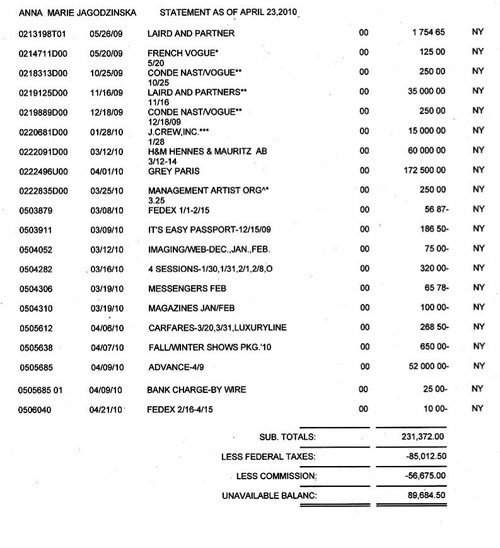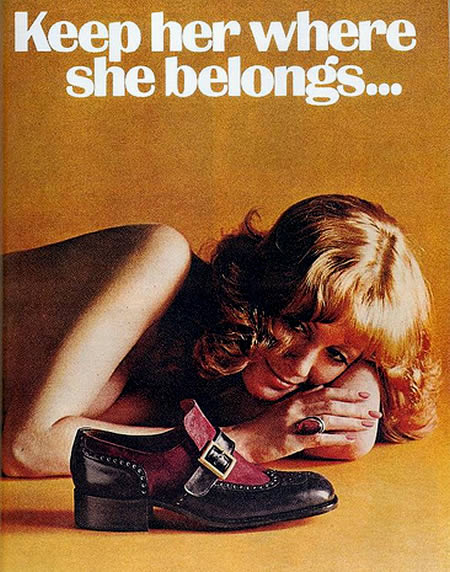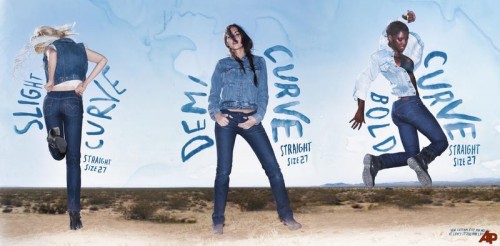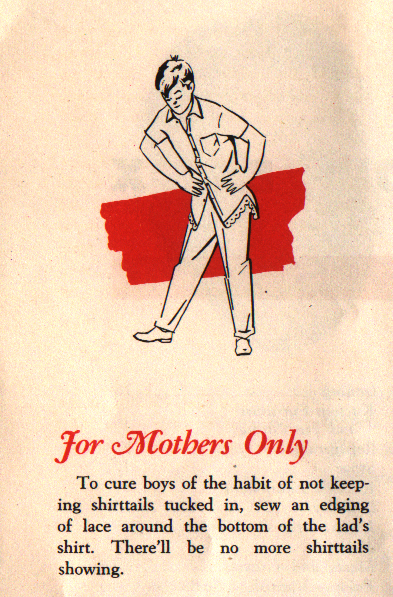A while back, Lisa drew on work by Ashley Mears to post about different preferred aesthetics in editorial vs. commercial modeling — that is, modeling for fashion magazines and runways as opposed to modeling clothing in catalogs and other venues specifically meant to lead to sales of products. Mears (whose forthcoming book, Pricing Beauty: Value in the Fashion Modeling World I eagerly await) points out that while models earn more prestige doing editorial work, they generally earn significantly more money if they can get commercial jobs (though, since the two types of modeling require different looks, models have little control over which type of modeling they’ll be considered for).
Jezebel posted an article about a lawsuit brought by three models against the modeling agency Next that clearly shows the low compensation models receive for doing some of the most prestigious modeling. This statement of model Anna Jagodzinska’s account (including payments that are still outstanding as well as deductions from her account for agency fees and services) with Next includes both editorial work (the second two items are her pay for a day of shooting with two different versions of Vogue) and commercial work (J. Crew, H&M, and large sums from agencies that put together advertising materials, such as Laird and Partners). The pay for a day’s shoot for French Vogue? $125. For the U.S. version of Vogue, the dominant fashion magazine, it’s $250:
The daily pay rates for catalogs, by contrast, are in the thousands.
It’s a perfect example of Mears’s argument that models often face a situation where prestigious jobs actually pay very little; so many models want to be in Vogue that the magazine doesn’t have to pay much, and the same is true for a lot of editorial work. Also notice that this statement, from April 2010, shows that the French Vogue has owed the $125 daily fee since May of 2009, and one of Vogue‘s payments has been due since October 2009 and another since December 2009. The end result is that in return for the status that comes with these types of editorial modeling jobs, models have to accept low pay compared to the commercial market, and may have to wait a long time to get even that.
The Jezebel article I linked to above includes an excellent explanation of the various charges on the account statement and the reason modeling agencies don’t aggressively pursue overdue accounts. Notice how it says “unavailable balance” at the bottom of the statement? That means the clients haven’t paid the modeling agency, so she has that much coming but hasn’t actually been paid yet, since the agencies treat the models like independent contractors and only pay them when the agency gets the money from the client.











